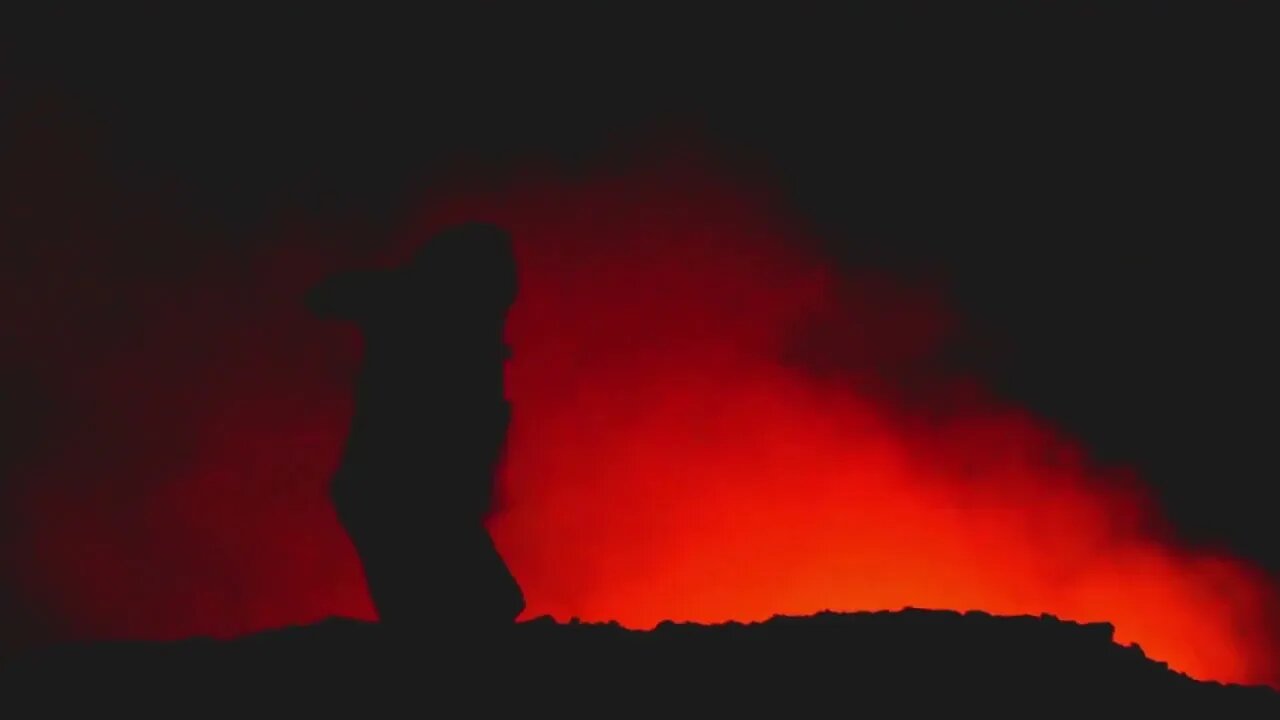Premium Only Content

lava erupting from the crater of a volcano #shorts
Lava is molten rock that has been expelled from the interior of a terrestrial planet or a moon onto its surface 1. It is also known as volcanic lava or magma (molten rock) emerging as a liquid onto Earth’s surface 12. The temperatures of molten lava range from about 700 to 1,200 °C (1,300 to 2,200 °F) 1. The material can be very fluid, flowing almost like syrup, or it can be extremely stiff, scarcely flowing at all. The higher the lava’s silica content, the higher its viscosity 1.
Lava can be classified into different types based on their composition and temperature. Some of the common types of lava include aa, pahoehoe, pillow lava, and block lava flow 1. Mafic (ferromagnesian, dark-colored) lavas such as basalt characteristically form flows known by the Hawaiian names pahoehoe and aa (or a’a) 1. Pahoehoe lava flows are characterized by smooth, gently undulating, or broadly hummocky surfaces. The liquid lava flowing beneath a thin, still-plastic crust drags and wrinkles it into tapestry-like folds and rolls resembling twisted rope. Pahoehoe lava flows are fed almost wholly internally by streams of liquid lava flowing beneath a solidified or partly solidified surface. Typically, the margin of a pahoehoe flow advances by protruding one small toe or lobe after another. In contrast to pahoehoe, the surface of aa lava is exceedingly rough, covered with a layer of partly loose, very irregular fragments commonly called clinkers. Aa lava flows are fed principally by rivers of liquid lava flowing in open channels. Typically, such a feeding river forms a narrow band that is 8 to 15 meters (25 to 50 feet) wide along the center line of the flow, with broad fields of less actively moving clinker on each side of it. At the front of the flow, clinkers from the top roll down and are overridden by the pasty center layer
-
 3:01
3:01
MoneyMindsTrading
15 hours ago $9.69 earned#1 Day Trader on Rumble : NVIDIA EARNINGS 🚀
70.3K5 -
 3:13:12
3:13:12
Price of Reason
18 hours agoDisney CEO Bob Iger PANICS after Trump win? Is Landman any good? The Game Awards Announces Nominees!
85K20 -
 2:51:40
2:51:40
Jerry After Dark
18 hours ago3 Point Contest | Presented By Ghost Energy
161K6 -
 2:24:56
2:24:56
Kim Iversen
15 hours agoRussia Threatens To NUKE Ukraine | RFK Jr Called Science’s True Voice By Former CDC Chief
140K316 -
 1:16:12
1:16:12
Savanah Hernandez
13 hours agoCorrupt Democrats attempt to stop Trump’s plan to fix America
123K95 -
 53:12
53:12
Glenn Greenwald
15 hours agoImprisoned For Journalism: Jeremy Loffredo On His Detention In Israel, Censorship & More | SYSTEM UPDATE #368
138K121 -
 51:42
51:42
Man in America
17 hours agoTrump, Elon, CBDCs, Digital Prison & the Great Taking w/ James Patrick
106K56 -
 3:50:14
3:50:14
I_Came_With_Fire_Podcast
16 hours agoSPECIAL LIVE FIRE (w/ Aaron Praeger)
97.6K19 -
 49:18
49:18
PMG
1 day ago $6.70 earned"Biden Regime Trying to Trigger WW III Before Trump Term Begins, and Ballots Still Being Counted?"
63.9K4 -
 1:24:27
1:24:27
Flyover Conservatives
22 hours agoWhile Trump Claimed Victory, Guess What They Were Doing Behind the Scenes... - Mel K | FOC Show
70.3K13